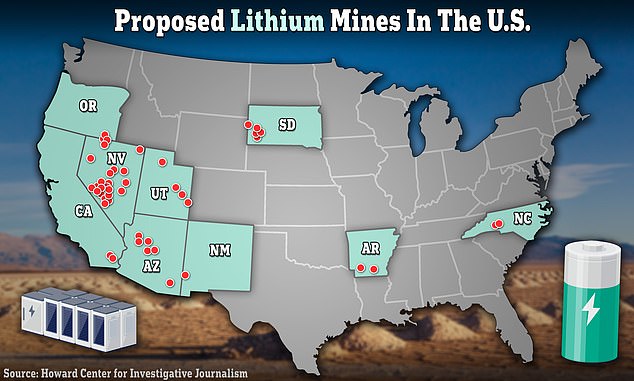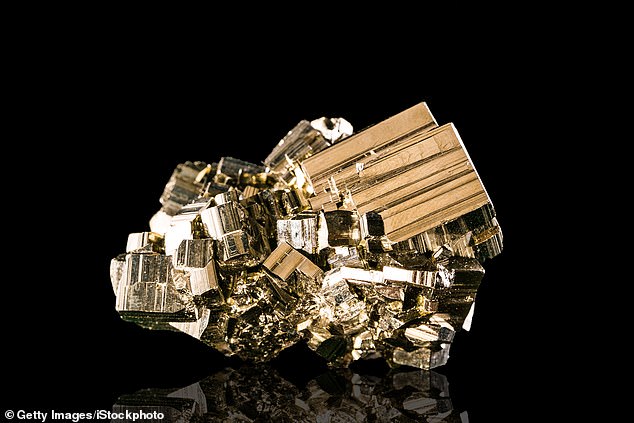Fool’s gold could start this century’s “gold rush” after scientists discovered it contains a highly sought-after metal needed to produce greener energy.
Scientists at West Virginia University discovered a surprising amount of lithium in 15 rock samples of pyrite, the common mineral that resembles its valuable counterpart, which formed about 390 million years ago in the Appalachian Basin.
The findings have led researchers to wonder whether former industrial mines could become a valuable source of lithium, but the discovery could reach far beyond the East Coast mountain range.
Lithium batteries are used to power a wide range of technologies, including phones, laptops, electric bicycles, portable power tools, electric vehicles, and are even used as solar energy backup storage.
West Virginia University researchers discovered lithium in fool’s gold (pictured) in the Appalachian Basin

The findings have led researchers to wonder whether former industrial mines could become a valuable source of lithium, but the discovery could reach far beyond the East Coast mountain range (pictured, the Appalachian Mountains in North Carolina ).
Demand for lithium is increasing as the United States moves toward green energy, such as electric vehicles that use lithium-ion batteries that risk posing a serious fire hazard.
Sulfur-rich pyrite does not require as many resources during the extraction process, meaning its environmental impact is much lower than the ion alternative.
And fool’s gold is found in quartz veins mined across the United States, in states like Colorado, Arizona, Pennsylvania, and Montana, meaning there could be a lot more lithium hidden in the United States.
Researchers in the electrochemical and engineering world “have already begun studying how lithium-sulfur batteries could replace lithium-ion batteries,” said study co-author Shailee Bhattacharya.
“I’m trying to understand how lithium and pyrite can be associated,” he said.
The team said they “unexpectedly” found that even with a relatively small amount of lithium in the samples, a significant portion (up to 54 percent) of all lithium can be released from pyrite alone.

Lithium is used to power a wide range of technologies, from electric vehicles to laptops and cell phones. Currently 110,000 tons of lithium are extracted each year worldwide, but by 2030, that number will need to increase to between 260,000 and almost 500,000 tons.

The US lithium boom is underway and there are currently 72 proposed mines in the country.
While it is unclear how the white gold in fool’s gold formed, the researchers noted that lithium is very sensitive to small increases in temperature and shale, found along the mountain range, forms with the same geological process.
“This is a very specific study, but it suggests that there is a possibility that shale could be obtained from old mines,” Bhattacharya said.
“We can talk about sustainable energy without using many energy resources,” he added.
The world currently produces approximately 110,000 tonnes of lithium each year, but the International Energy Agency (IEA) has forecast that the world will need between 2.5 and five times more lithium by 2030, representing between 260,000 and almost 500,000 tonnes.
However, the real problem is not the quantity, but the ability to produce the amount of lithium needed to sustain global green initiatives, and fool’s gold could be the answer.
The lithium found in fool’s gold could present a cost-effective, more environmentally friendly and safe approach because it is extracted from the sulfur-rich mineral.
Former industrial sites leave behind what is called “mine tailings,” which are made up of minerals left behind after the target mineral was mined.
New mines can cause serious negative environmental impacts that can continue for years after their closure, such as deforestation, pollution, soil erosion and loss of biodiversity.
Mining minerals such as lithium and cobalt, which are used to power electric vehicles, has left 23 million people in the United States exposed to toxic waste, destroyed 16 million acres of farmland and polluted 310,000 miles of rivers.

